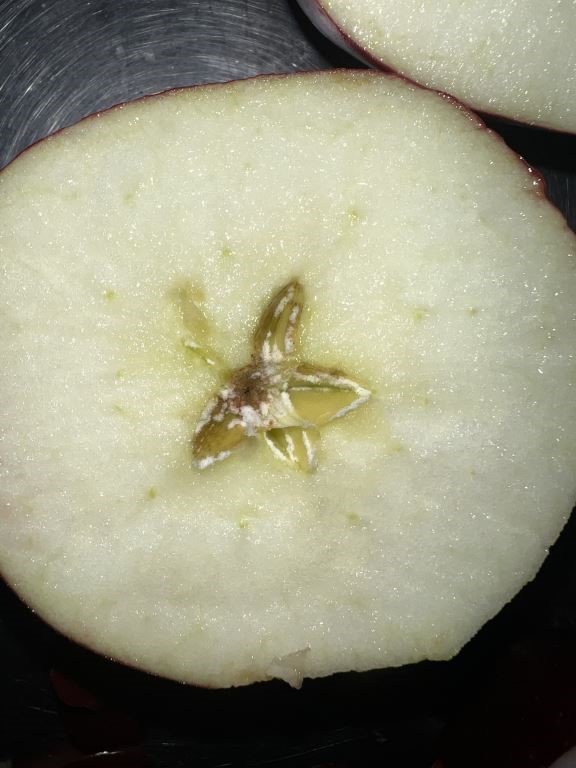Callus tissue versus moldy core in apples
Moldy core is a disease that develops in the locules or seed cavities of fruit. Do not confuse it with other internal tissue, which sometimes forms in the locules of certain varieties.

Moldy core is a fungal disease of apples, characterized by soft, fluffy, fungal growth in the locules, or seed cavities, of the fruit. It is typically dark and does not penetrate into the flesh. It may lead to secondary infections by other pathogens and subsequent decay or rot. When examined under the microscope, strands of mycelial cells are visible, typically 2-10 microns in width. This growth is often found in varieties such as Red Delicious and Idared, which have an open sinus from the calyx to the core.
Two excellent reviews of moldy core are available from Michigan State University and PennState Extension.

Other growth is sometimes found in the locules, which is white and very firm. In examination under a microscope, strings of cells are evident, but cell width is roughly 30 microns, much wider than fungal cells. It is more common in some apple varieties such as Red Delicious and Fuji. This is not moldy core but may be mistaken for such.
The characterization and cause of this growth are still not well understood. Scientists have not completed a thorough investigation of the growth. One hypothesis is that this is apple callus tissue formed within the fruit of certain varieties. It is not considered pathogenic or problematic.



 Print
Print Email
Email
